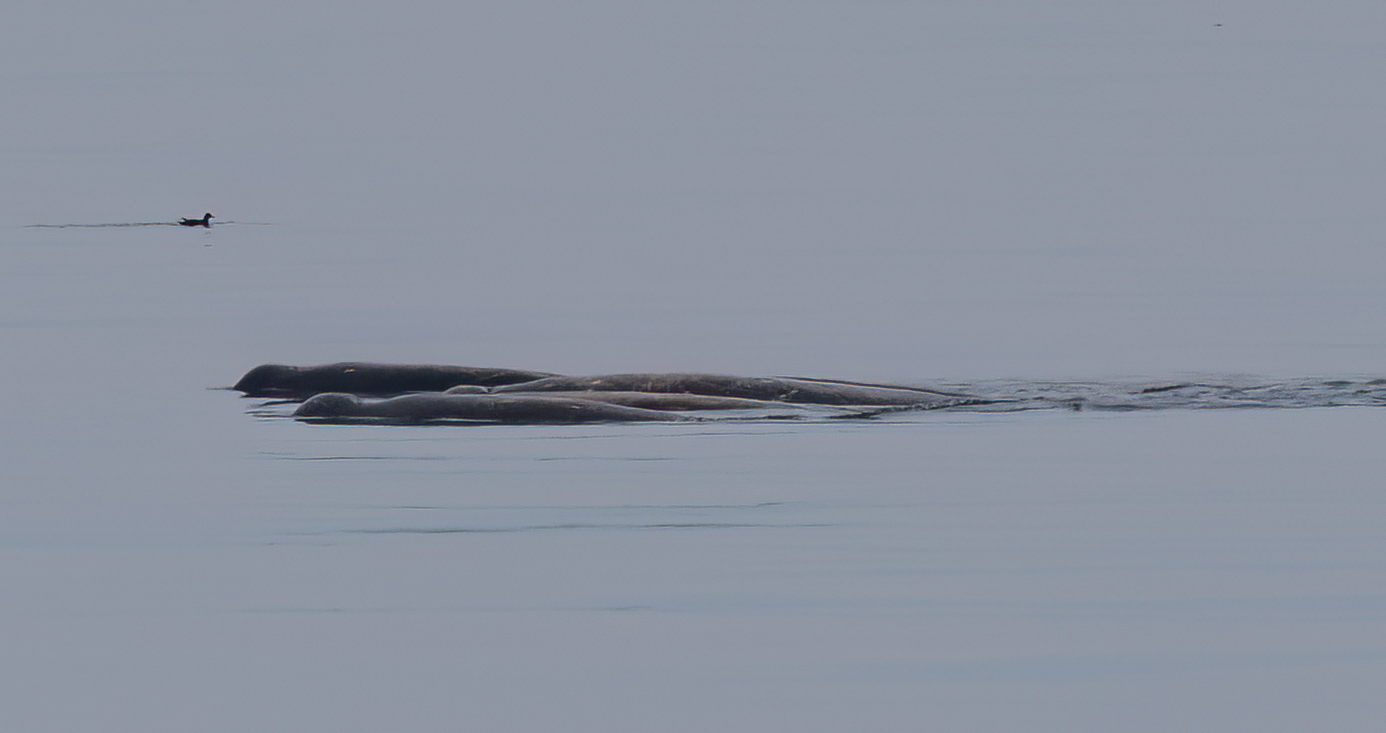
Beaked Whales & Badgers, Japan June 2025
I spent a week in eastern Hokkaido in June looking for Sato’s Beaked Whales with Todd Pusser, Bob Pitman and Lisa Ballance, three of the world’s top cetacean experts. They are also three of world’s nicest people, in part because they are so supportive of my listing addiction. Todd showed me Red Wolves in 2022 and was, with Bob Pitman, instrumental in getting me out on a Vaquita research trip last year. We were also joined for some of the trip by Killer Whale researcher John Totterdell and his wife Grace. They are Australian, so I do not need to state the obvious that they were also great people.
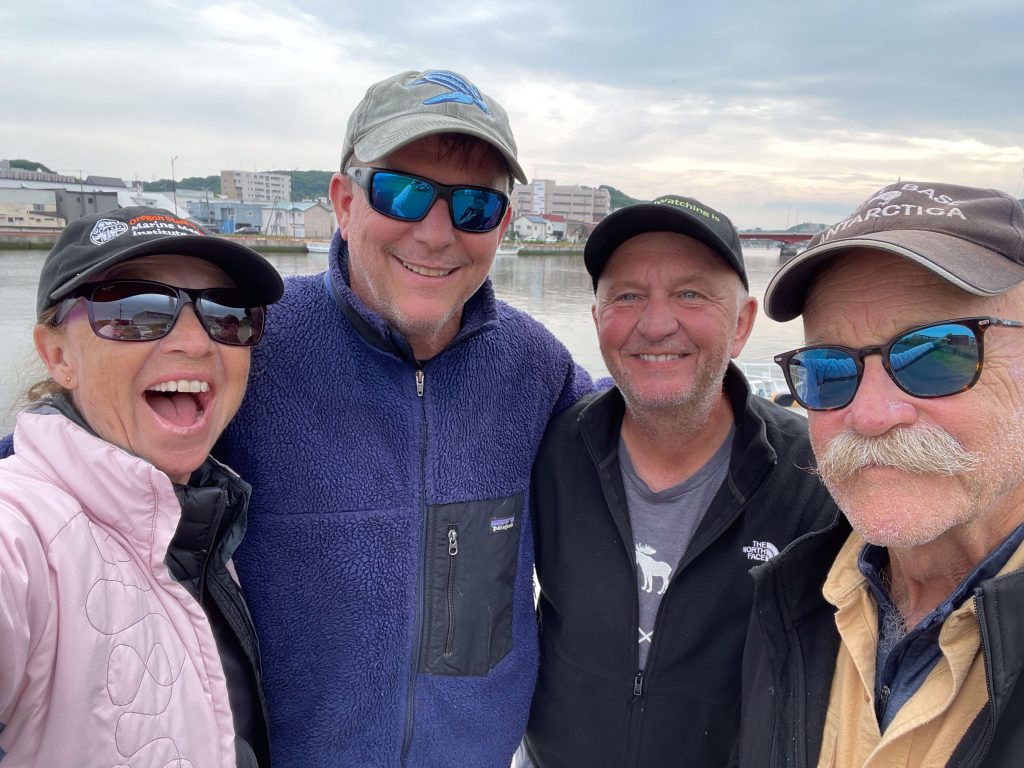
Lisa, Todd, me and Bob. Post Sato High.
If you heard Bob on the mammalwatching podcast – one of my favourite episodes – you will remember he has seen just about all of the world’s cetaceans. But not Sato’s Beaked Whales. Bob set the trip up with Professor Mari Kobayashi from the Tokyo University of Agriculture and invited me along.
Mount Takao, Tokyo
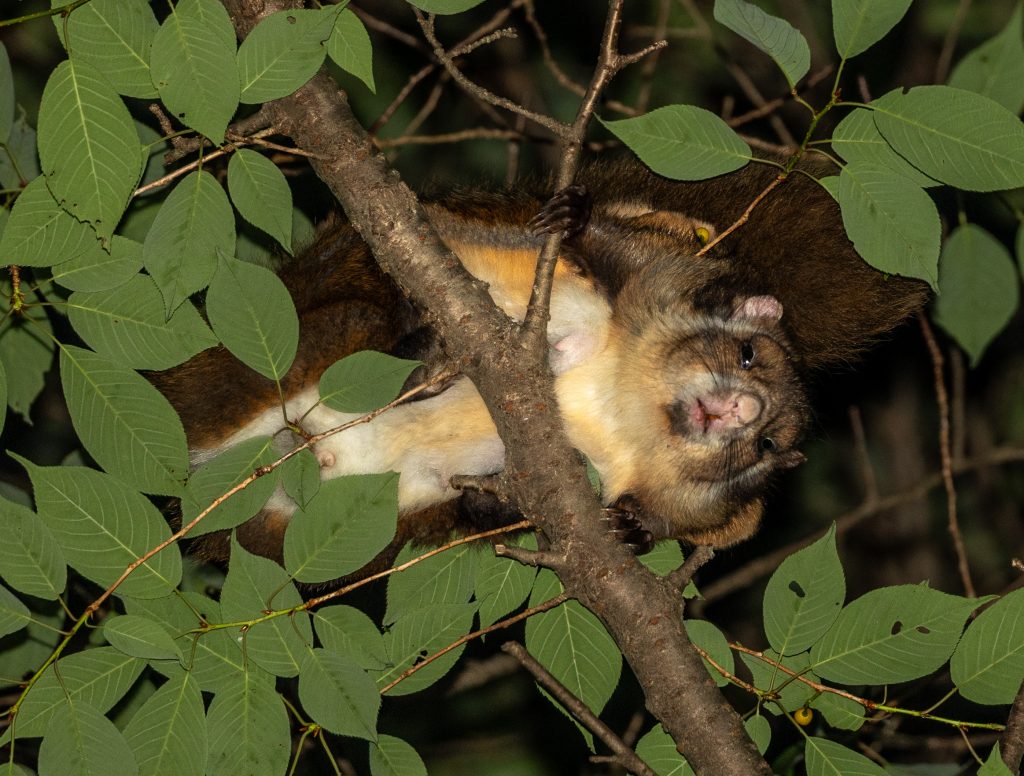
Japanese Giant Flying Squirrel (Petaurista leucogenys)
I flew into Tokyo on Saturday afternoon and took a long – and sleepy – set of subway rides to Mount Takao on the far west of the city. I wanted to search for Japanese Badgers, a species that had eluded me an embarrassing number of times. I knew the badgers were on Mount Takao from this trip report plus, in April, a friend sent me videos of badgers mating in her mother’s garden on the edge of Takao San.
The mountain is a popular destination – especially at the weekend – and the only hotel I could find with space was the Hotel Ho-oh Annex, just a 15 minute walk from Takaosanguchi Station where the trail up Takao begins. The hotel was also half the price of what the others cost. More on this later…
I dropped my bags and headed straight back to the trail head, arriving at dusk. A cable car runs up the mountain in the day and if you were lacking the energy for the fairly steep hike, you could take the last cable car up the mountain and wait for dark, while eating ice creams from the many vending machines up there.
It took me an hour to walk slowly up the trail (which is in fact a paved road that official vehicles can use) to reach the upper cable car station. The only mammals I saw were a few Sika Deer and an unidentified rodent in my thermal scope. I was planning to continue to the summit if needed, but just 100 metres past the cable car station, along a flat section of the road, I heard something rustling in the leaf litter.
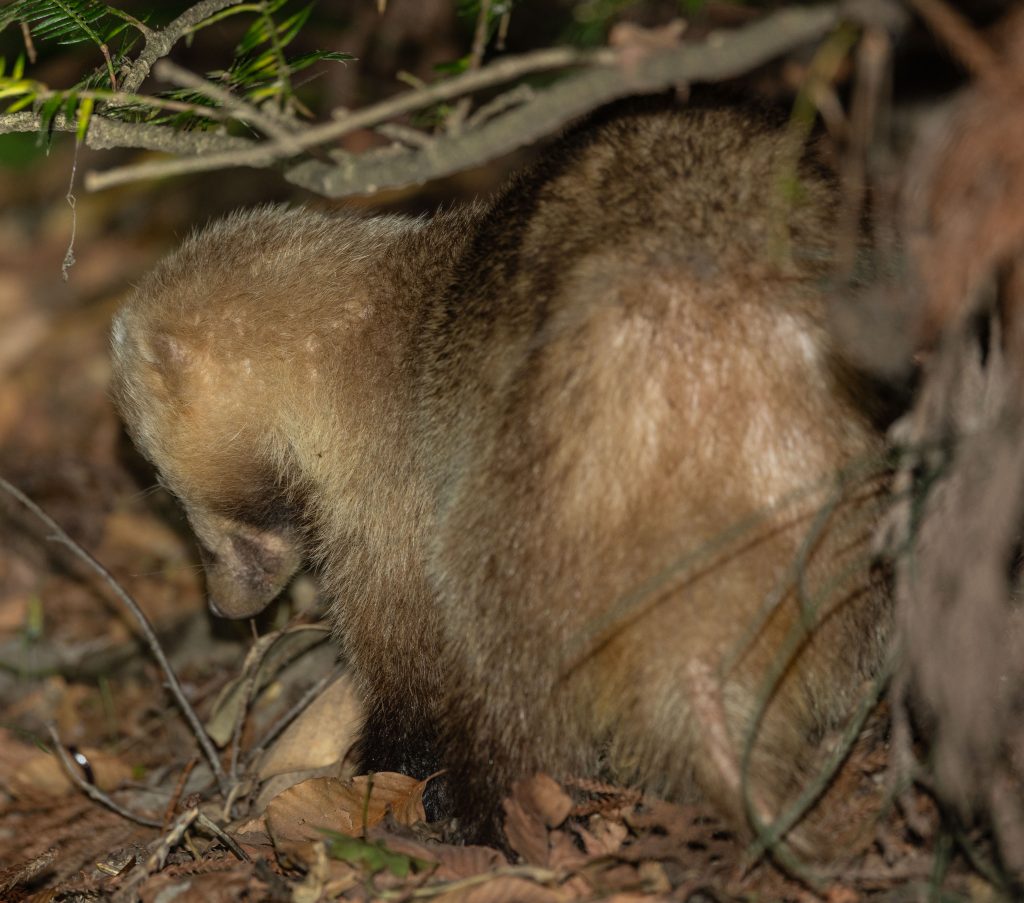
Japanese Badger (Meles anakuma)
Mission accomplished. I have tried to see Japanese Badgers on at least four previous trips to Japan.
A hundred metres further on I saw a second animal that gave better views.

Japanese Badger (Meles anakuma)
After the quiet walk up the mountain it was suddenly all happening up here past the cable car station. Badgers aside and I saw three Japanese Giant Flying Squirrels in the same few hundred metres of trailside forest and heard others.
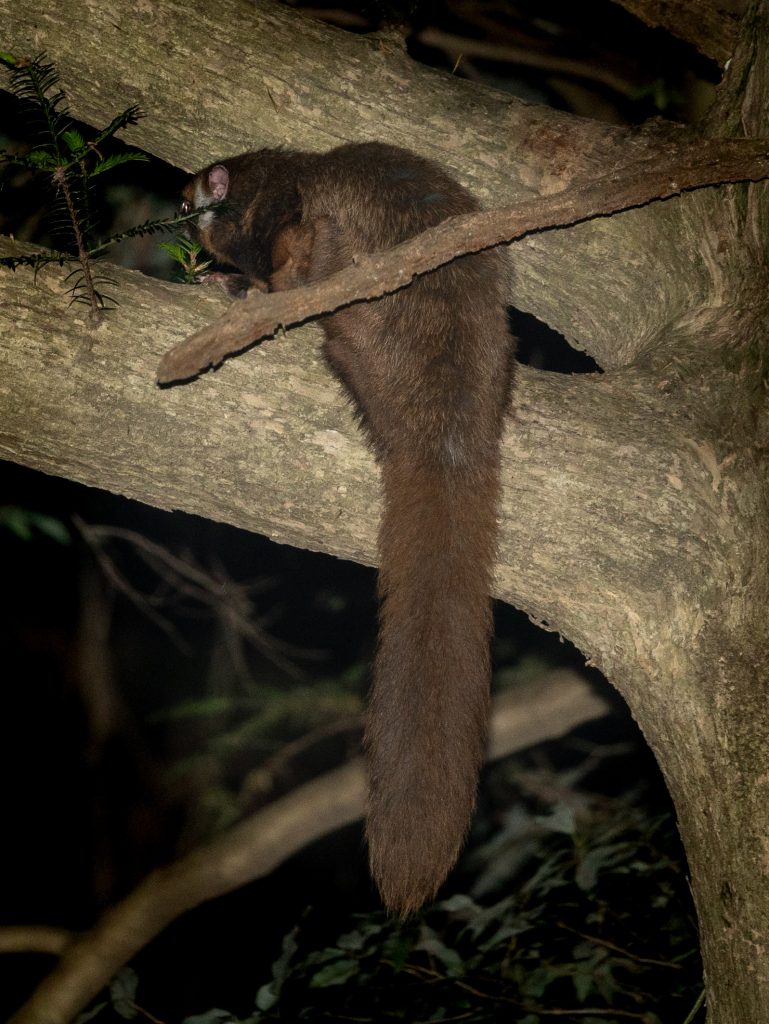
Japanese Giant Flying Squirrel (Petaurista leucogenys)
It was now 10.30pm so I walked back to my hotel, seeing more Sika Deer and what I think was a Japanese Marten about half way down the mountain (I saw very bright eye shine and got a glimpse of the animal running quickly but it could have also been another badger I suppose). Raccoon Dogs (Tanuki) are fairly common on the mountain too.
Back at my hotel I took more time to look at my room. It was decorated with paintings of scantily clad women and romantic music was piped out of the ceiling. I opened the minibar to grab a celebratory beer. But this was no minibar. After 30 bemused seconds I understood it was a sex toy vending machine. I have no idea of the purpose of some of the contents, but am pretty sure none were beer cans in disguise.
I wonder what the manager made of me when I arrived alone to check into this love hotel, with a camera and binoculars around my neck… but like everywhere in Japan the place was spotlessly clean and quiet and I would stay there again.
Hokkaido
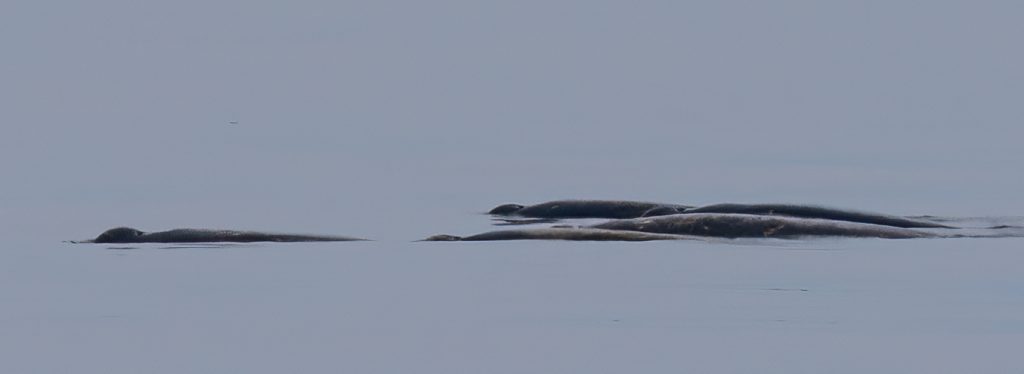
Sato’s (Least) Beaked Whale (Berardius minimus)
Abashiri
Bob Pitman organised our Sato’s search with Professor Mari Kobayashi from the Tokyo University of Agriculture’s Abashiri Campus. Mari is a marine mammal expert,researching Sato’s Beaked Whales in the Sea of Okhotsk. Bob allocated a week or so to find the whales. He was optimistic we would see them if we had a couple of days of good weather. No one knows more about finding beaked whales than Bob and I had complete faith in our mission.
As we boarded our plane for Mombetsu we received an email from Mari. The sort of email that strikes fear into every mammalwatcher’s heart. Bad weather was forecast for the next few days and she recommended we delay our trip by a week. My stress levels started to rise. I was beginning to have a crisis of faith in our mission.

Dall’s Porpoise (Phocoenoides dalli)
We met Mari a few hours after we landed for a meeting at Mr Donut, a cafe we were destined to spend an unhealthy amount of time in.
Mari has designed a program for us and explained her boat was already booked to take general whalewatching trips most mornings over the next week. Weather permitting we would go out in search of Sato’s most afternoons. Weather permitting … the forecast was looking seriously dodgy for the next few days. But Mari had booked the boat for us to take an all day Sato’s trip in seven days time.
Mari said the Sato’s were hanging around about 15 – 20 miles off shore, so were very rarely seen from the commercial whalewatching trips which focus on Fin Whales closer to shore. But she reassured us the whales were still here. She had taken a brief trip out yesterday afternoon and had found the Sato’s in their usual spot and taken some superb drone footage. Crippling! You should have been here yesterday is another message guaranteed to strike fear into every mammalwatcher’s heart.
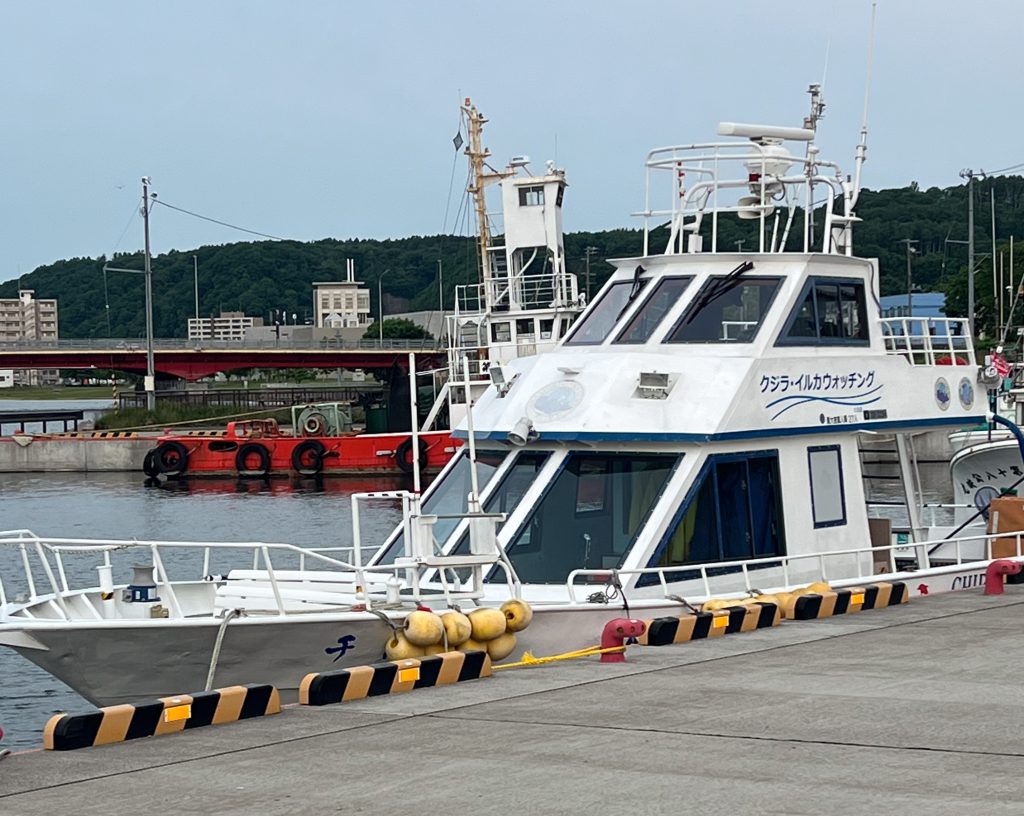
The Chipshiri, Mari’s research boat
Our hopes of getting out to sea over the next days were thwarted, mainly by wind. And when it wasn’t windy it was foggy. I spent my days checking the weather forecast every 20 minutes, trying to find a coffee shop that was open before 10am, and spending way to much time in Mr Donut listening to Bob, Lisa and Todd’s stories about adventures in every corner of the seven seas featuring islands I had never heard of.
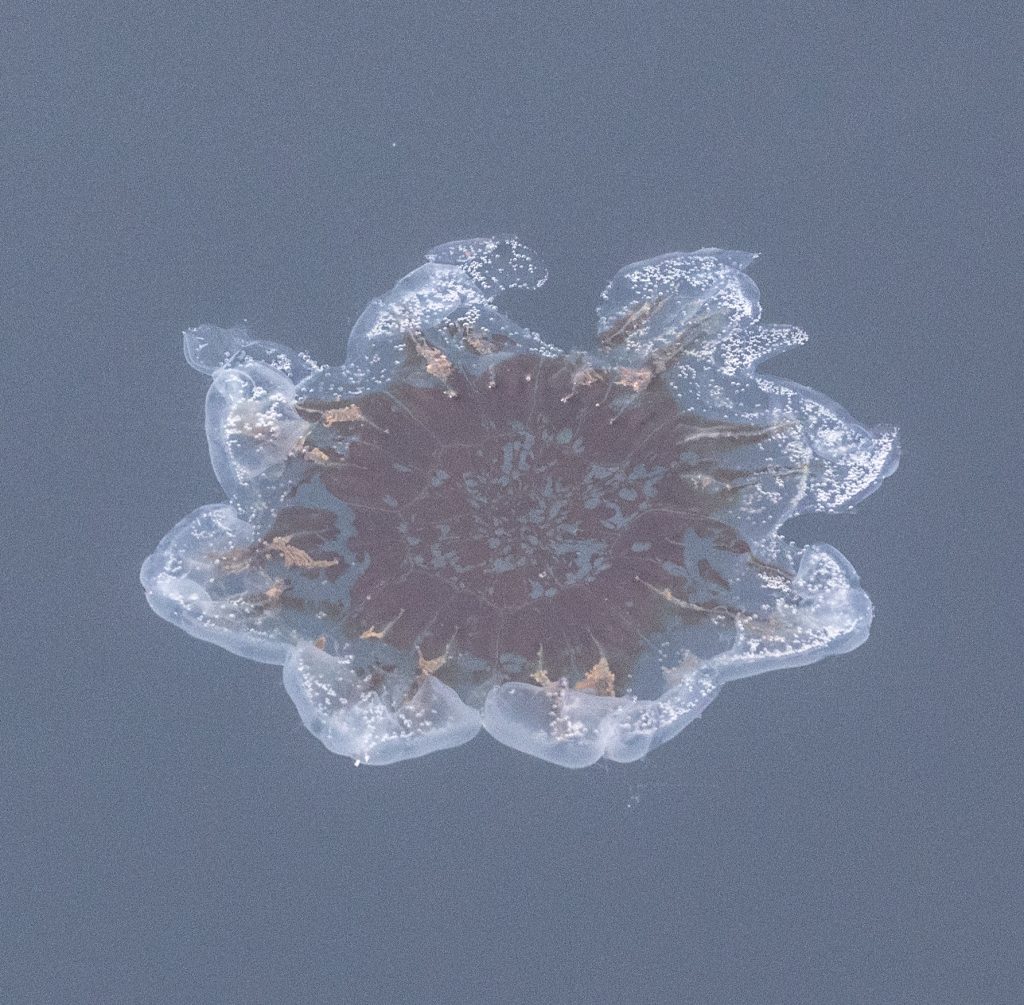
Abashiri jellyfish
As each day’s cruise was cancelled I reached a level of anxiety I hadn’t hit since I was waiting for a space on the Vaquita research trip last year.
Cetacean chasing is, I came to realise, the most stressful form of mammalwatching. Although the weather can affect any trip, at least you can usually brave the weather to go looking for stuff. You might have little chance of success but you do have an illusion of hope. But when your captain won’t leave the harbour there is nothing to do but descend into a black spiral of misery. Or maybe that is just me. The others seemed happy enough enjoying the museums and restaurants of Abashiri. They seemed almost relaxed. Incredible.
Over the next six days the weather and the boat’s schedule allowed us to get out to sea for just one afternoon. Conditions were reasonable and the Captain saw a very distant pod of Sato’s Beaked Whales but we were unable to relocate them. We saw a few Dall’s Porpoise and Todd saw a Minke Whale. Our hopes and dreams were pinned on the all day cruise set for Monday.

Fin Whale (Balaenoptera physalus)
Our hopes and dreams were built on a a very shaky foundation. Monday’s forecast slowly deteriorated as we approached the big day and by Saturday we were talking about delaying our flights home from Japan or perhaps never leaving. And then on Saturday night the forecast improved. Monday was looking good again.
There were more plot twists. On sunday evening Mari texted to say that heavy fog was now forecast. The captain would decide only at 4am whether we could get out.
Mari’s text arrived at 3:55. The weather was perfect. We would leave in an hour. I am not sure I have ever gotten a better text.
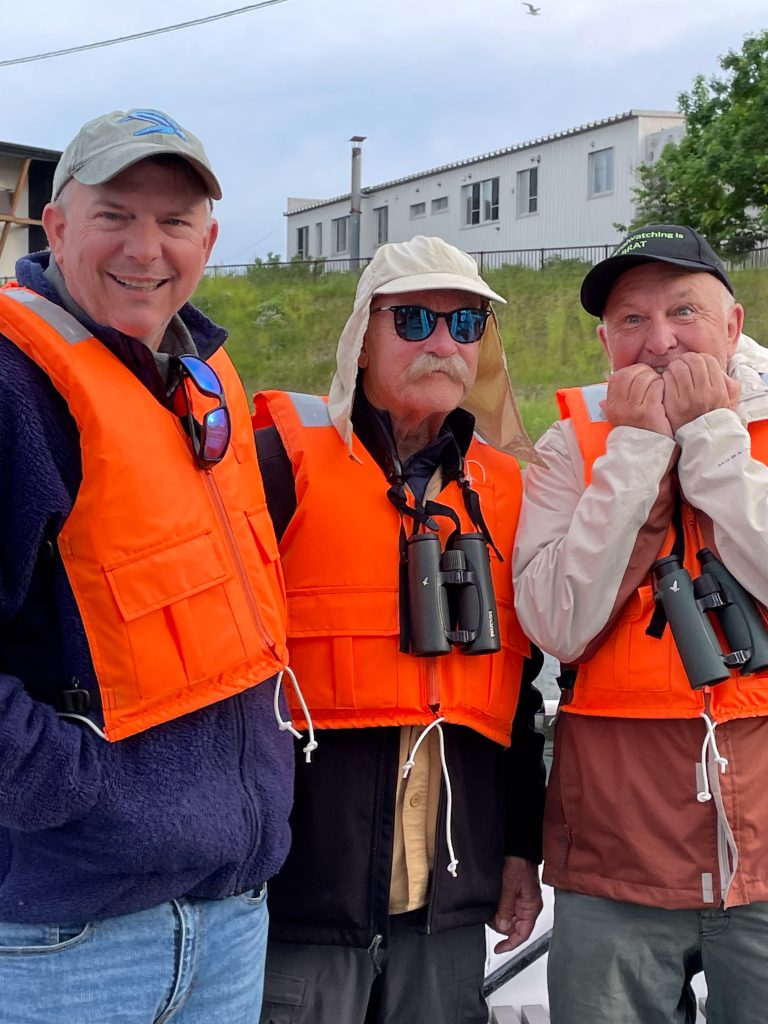
Pre-match nerves
Conditions were indeed perfect. There wasn’t a breath of wind and even 15 miles off shore the sea was like glass.
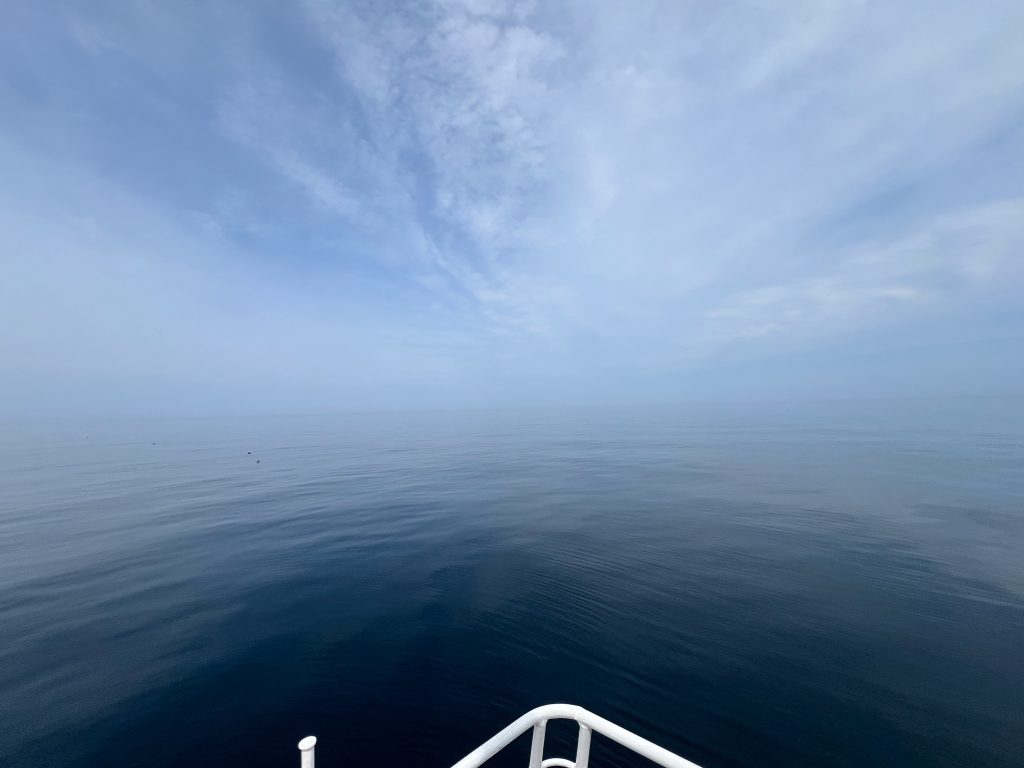
Beaked Whale Weather
There were thousands of Short-tailed Shearwaters on the water out here. I had never seen anything like it. Check out this video.
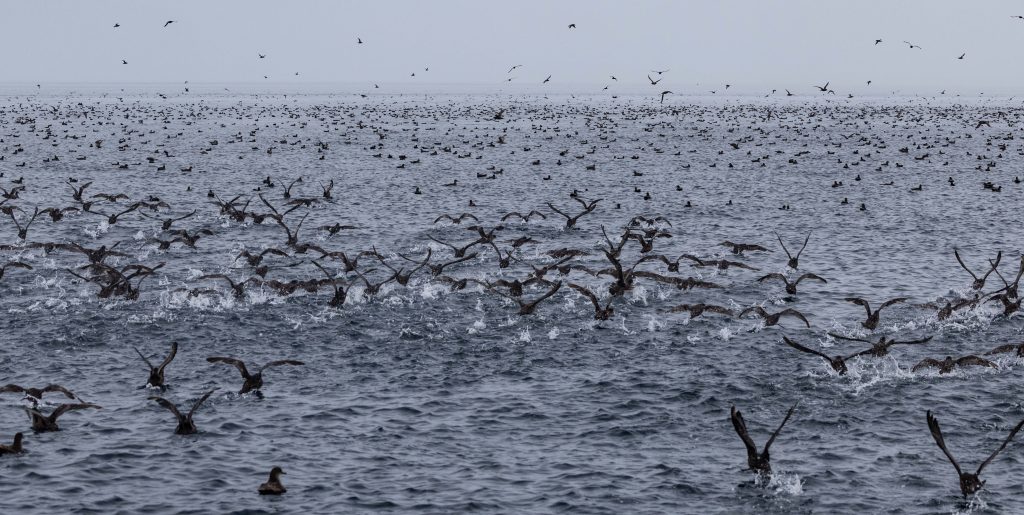
Short-tailed Shearwaters
After passing a few Dall’s Porpoise, a Northern Fur Seal and a Fin Whale the captain announced he had seen beaked whales a few miles ahead. The captain’s spotting was impressive. Even in these conditions the blow is hard to spot from a few hundred metres let alone miles away. We sailed towards their location and 20 minutes later we were watching a pod of six beaked whales logging at the surface between dives.
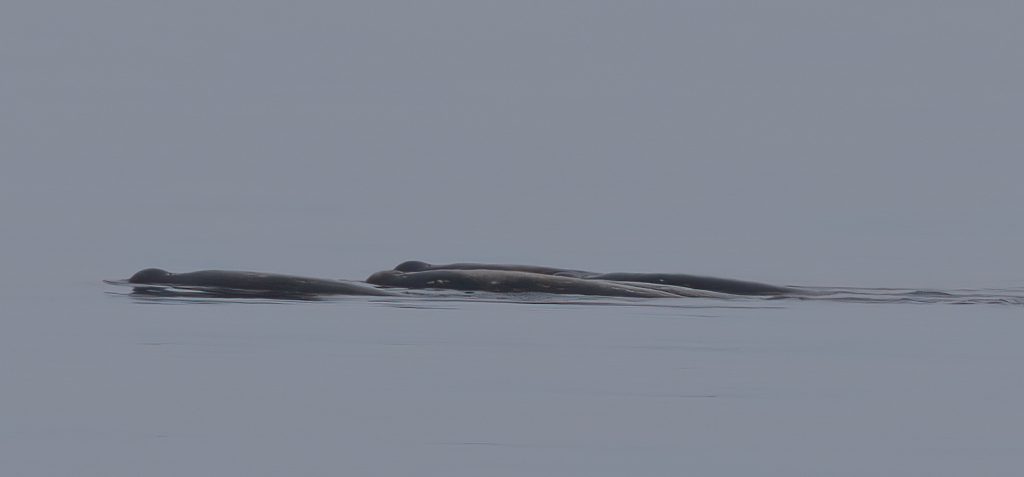
Sato’s (Least) Beaked Whale (Berardius minimus)
Bob refused to celebrate until he was sure they were Sato’s Beaked Whales, which the drone footage confirmed a minute later.
Sato’s Beaked Whales dive for around 25 minutes on average, though Mari has recorded dives of over an hour especially in deeper water. We realized we were in among 4 or 5 pods of animals – perhaps 20 or more animals in total – and we spent the next five hours following and trying to photograph and film them.

Sato’s (Least) Beaked Whale (Berardius minimus)
Photography was a challenge. We were never close. It felt as is the whales may have been avoiding the boat, and as there is still whaling in these waters it would not be a surprise if the animals were nervous. Moreover my mirrorless camera’s autofocus struggled with the glassy seas as it had done in the Azores. This, Todd told me, is a well-known issue with mirrorless cameras.
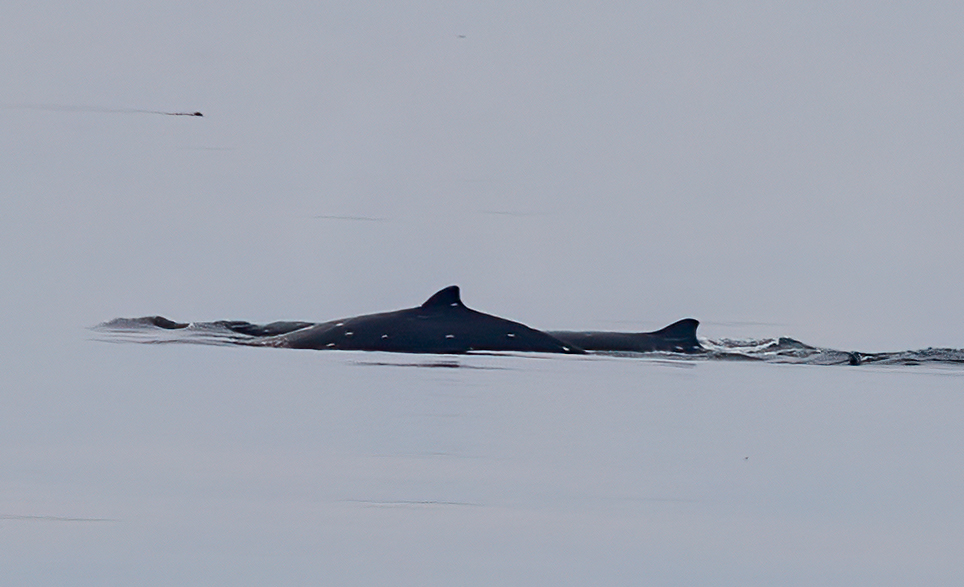
Sato’s (Least) Beaked Whale (Berardius minimus)
Though my pictures are not great, our captain – who was an exceptional drone pilot – took some superb footage of the whales from above which I hope we might be able to share here before too long.
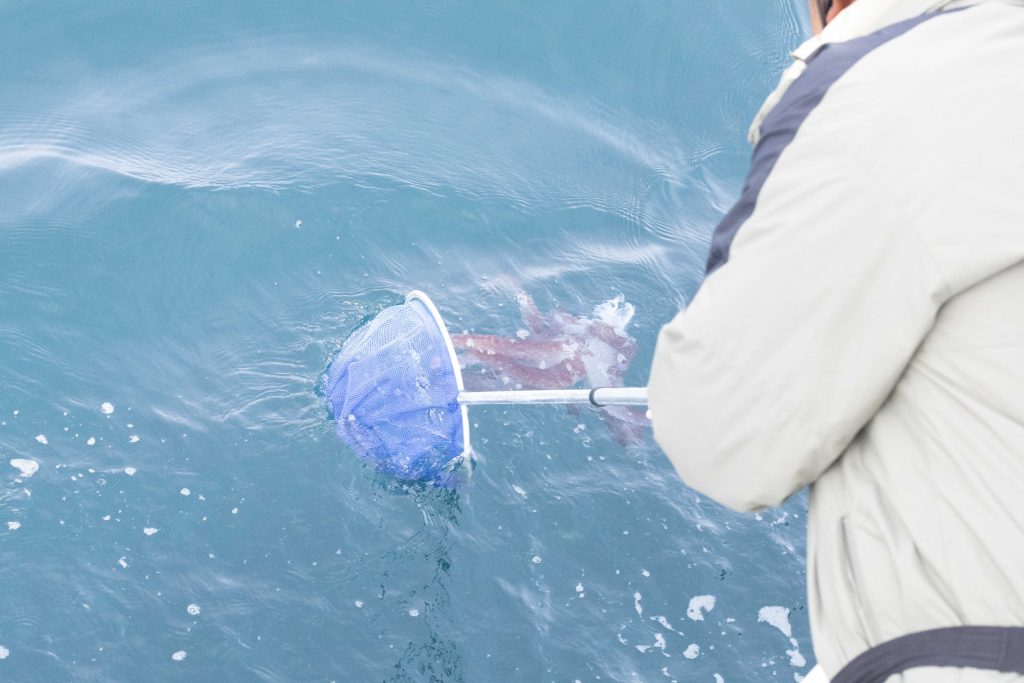
Beaked whale food
If you want to join Mari on her research trips then it might be possible. Based on our experience you would need to budget at least a week in order to have reasonable chances of the weather you need. There is a fee to join a trip and Mari stressed that all the data collected belongs to her team. You can contact her here.
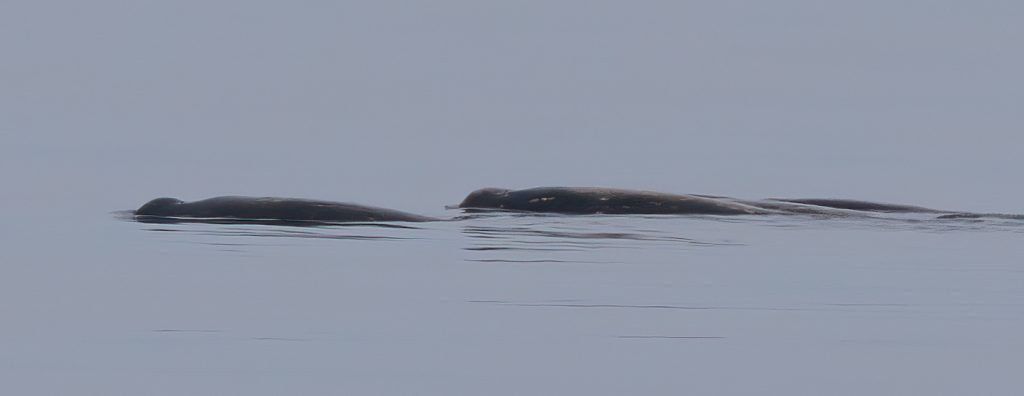
Sato’s (Least) Beaked Whale (Berardius minimus)
May and June are peak Sato’s season. In the autumn Baird’s Beaked Whales are common and seen on most whalewatching trips that go out, although the weather is typically quite bad then.
The only other mammal I saw in Abashiri was a Eurasian Red Squirrel crossing the road near the Prison Museum, the gardens of which are a reliable site for them.
Rausu
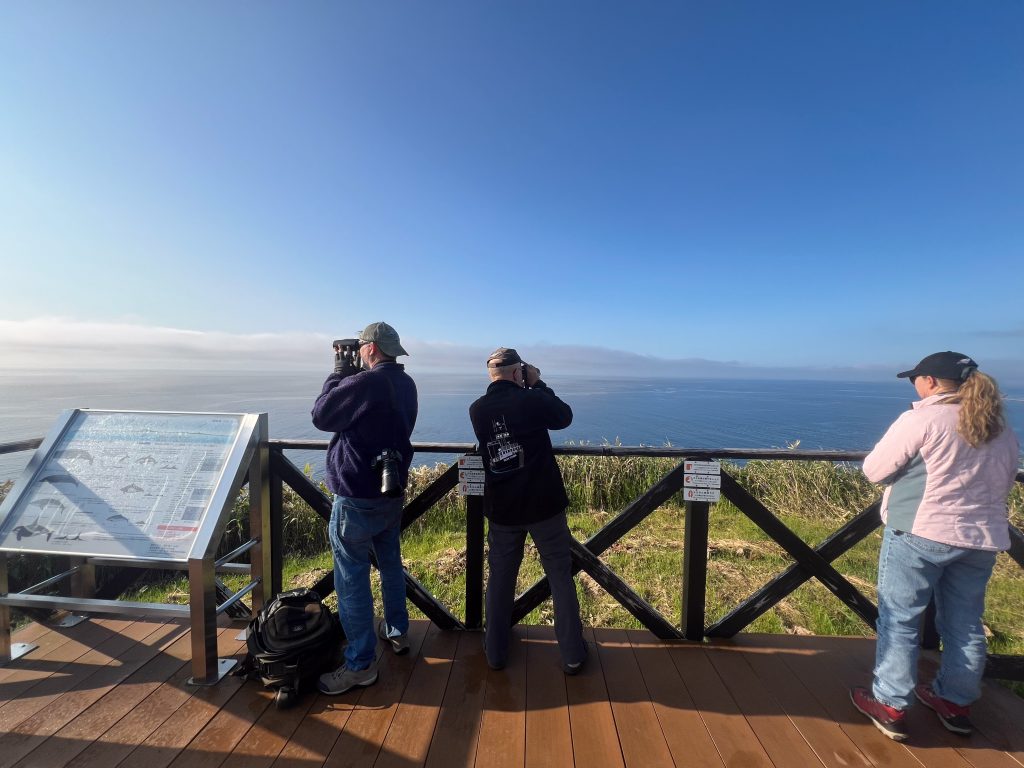
Whalewatching Platform at Rausu
Rausu, on the other side of the Shireteko Peninsula, about two hours from Abashiri, is another area to search for Sato’s Beaked Whales. In late May they were seen at least twice from land here. Once, distantly, by Dane McDermott from the whalewatching lookout platform just north of town, while And ‘Anago’ saw a pod a few hundred metres off of the beach from the coast road just north of the lookout.
On a day we were unable to search from Abashiri, we drove the 2.5 hours to Rausu to spend time looking for whales.
We spent several hours in the late afternoon and early the next morning sea watching from a lookout platform by a lighthouse just north of Rausu. It overlooks a large vista of ocean and there were usually other cetacean spotters up there. Conditions were good but the only mammals we saw were a probable – and very distant – Humpback Whale that Bob spotted and a Steller’s Sealion that only Todd saw close to the shore.
There are several whalewatching boats operating out of Rausu. We spoke to a crew member from one of them who said they had seen Sato’s at least six times in May. Killer Whales are a big draw here and John Totterdell had fabulous Orca viewing here after he left Abashiri, seeing 50 or more in a single morning.
Driving north along the coast to the end of the road we saw several Red Foxes and Sika Deer and Todd spotted a Siberian Chipmunk. Todd spent the evening visiting a hide in in Rausu to see Blakiston’s Fish Owl which seems to visit year round. Bob, Lisa and I opted for vending machine beer in our hotel lobby.
Lamp No Yado Onsen, Moritsubetsu
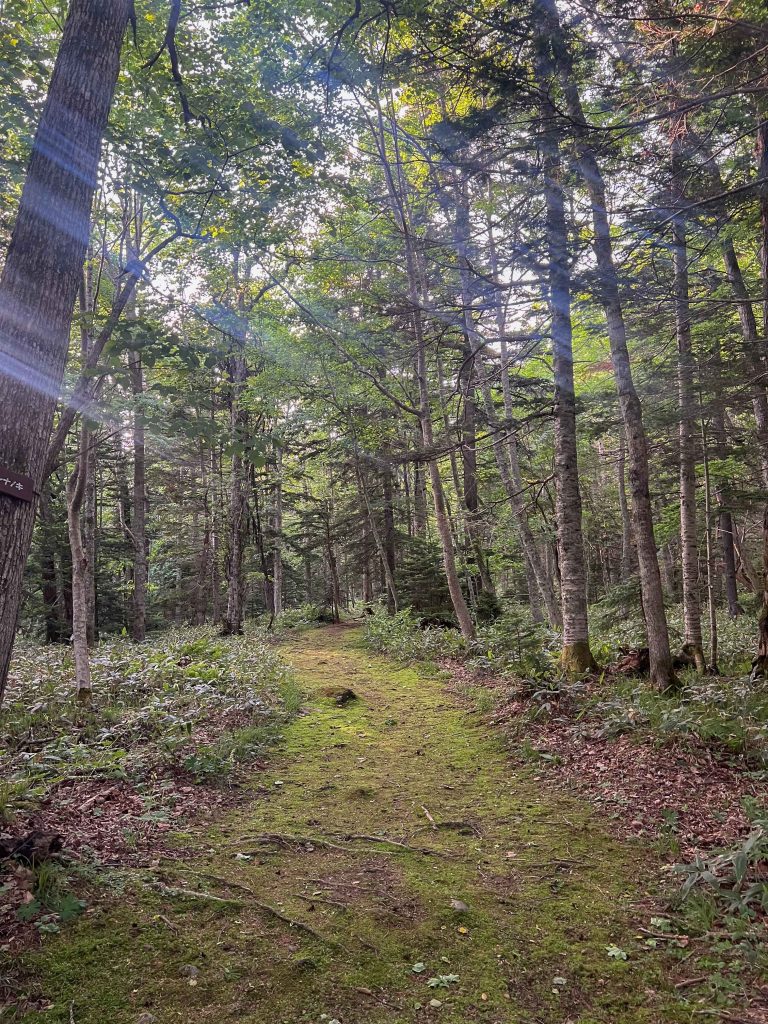
Moritsubetsu forest
With the whales under our belts, the others flew to Tokyo to look for East Asian Finless Porpoises off of Choshi. I had seen the species before (in Busan Korea) so I decided to spend my last night in Japan at Lamp No Yado Onsen near Abashiri which featured pictures of Sable on their website.
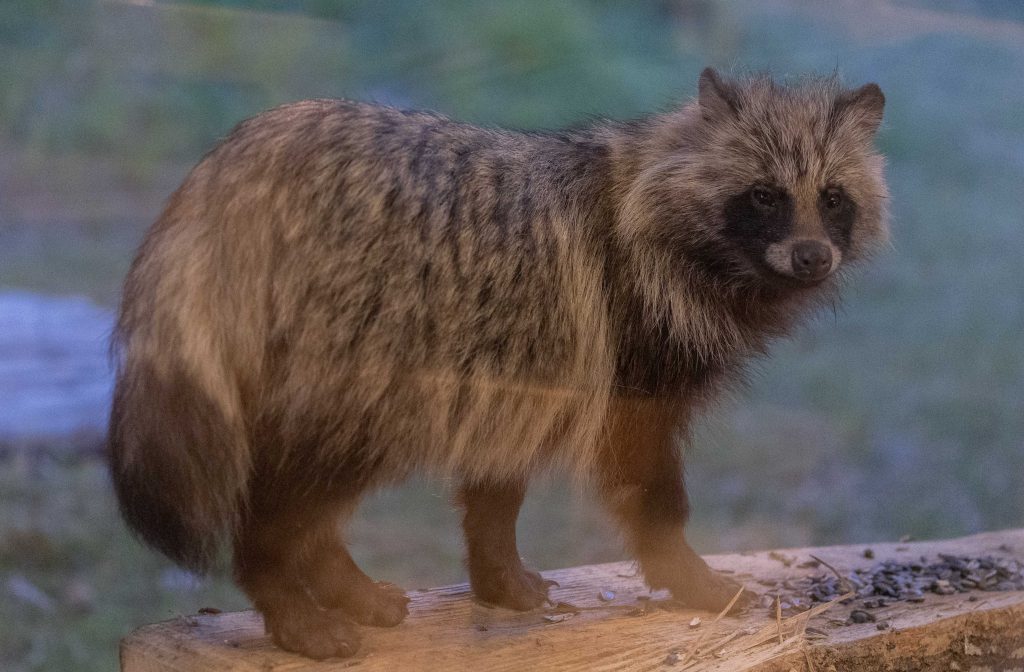
Japanese Raccoon Dog (Nyctereutes viverrinus)
The onsen was lovely, as was the surrounding forest, and dinner was delicious. But, as I suspected, the Sables visit only in the winter though – judging by the number of Sable plushy toys and postcards in the lobby – this should be a reliable place to see them then. I did see two Raccoon Dogs at dusk at the bird feeders – as predicted by the guy who checked me in – and many Sika Deer in the forest around the hotel during a short night walk with my thermal. When the other guests saw my camera and realised my interest they summoned by excitedly to see the deer with shouts of “Bambi! Bambi!”.
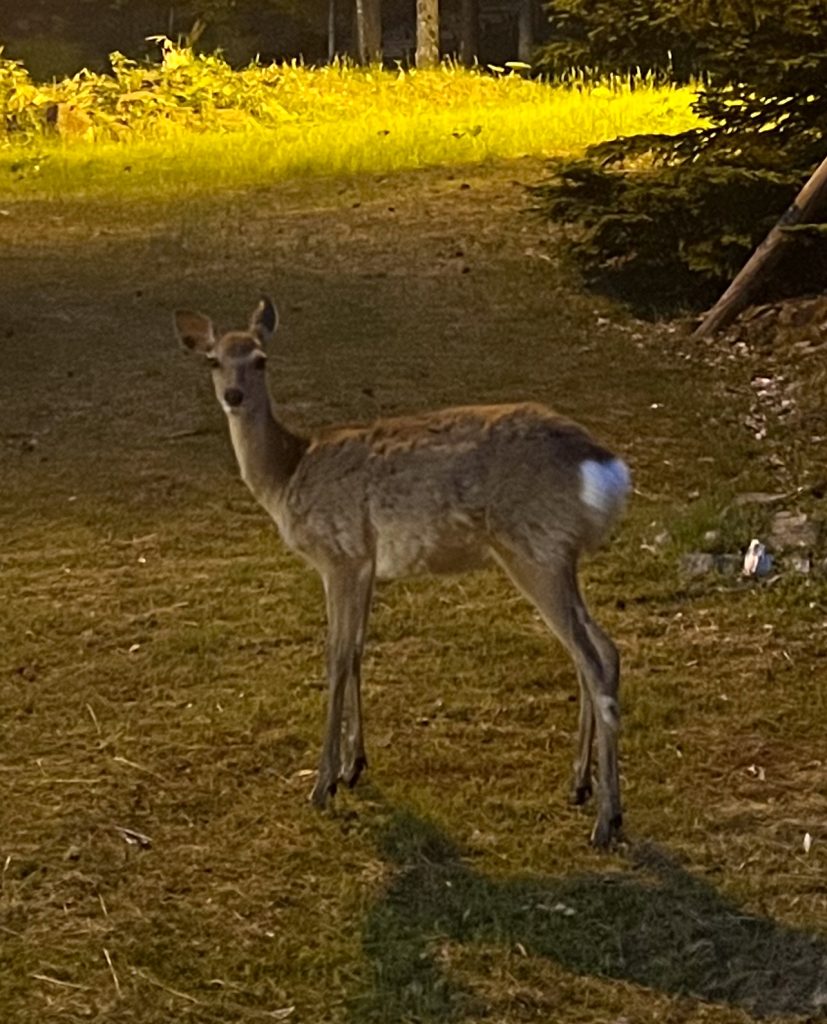
Sika Deer (Cervus nippon)
Tokachi-Dake Mountain
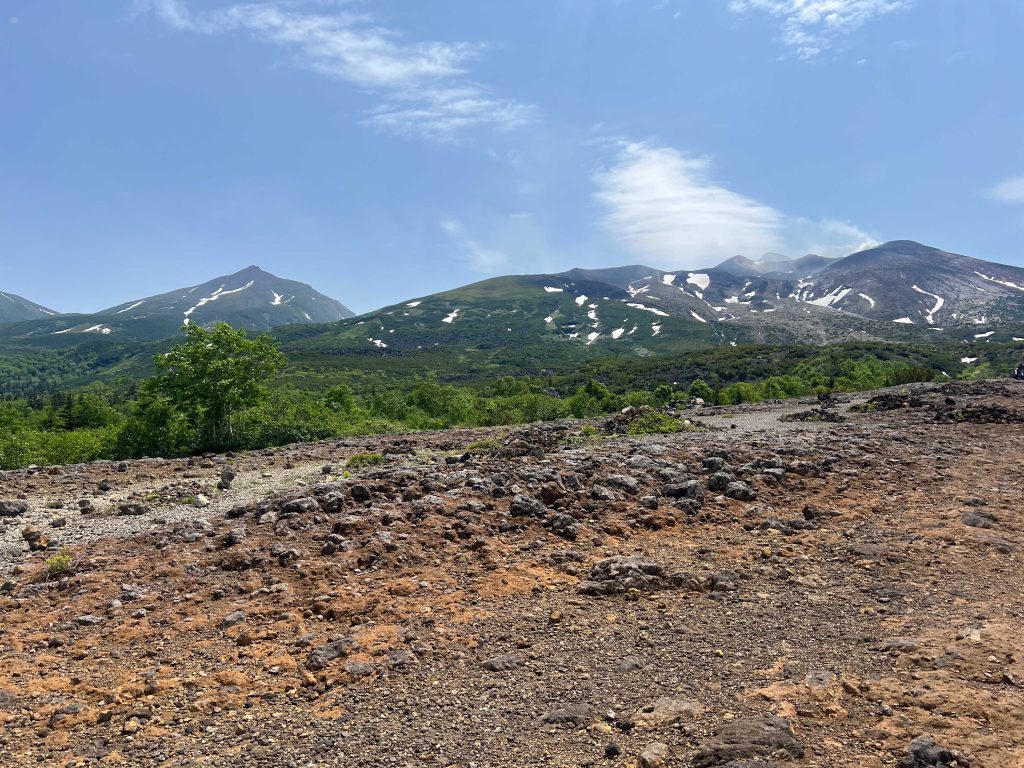
I wanted to see a Northern or Japanese Pika when I was in Hokkaido. This would require a full day trip from Abashiri so Todd and I went to the mountains of central Hokkaido on a day the boat was unavailable to us.
I had found two reports of places to see the Pika. This report from Hiro and Noki about Lake Shikaribetsu was very helpful: I particularly liked the idea of a pika signboard showing me when I had reached the correct viewing spot. But I decided to try looking on Tokachi-dake Mountain first as it was a little closer and I was seduced by the claim that “Japanese pikas can be seen in abundance in the scree slopes of Bogakudai, the trailhead for Tokachi-dake Mountain.”
I am not sure if this was the right call: I had imagined the rocks would be alive with frolicking pikas. This was notthe case.
Todd and I arrived in the mid-morning after a five hour drive and spent three hours checking out likely looking habitat along the trail up the mountain and staking out various areas. No pikas.
I was finding it hard to persevere, wondering if we were in the wrong place and was ready to drive for another two hours to Lake Shikaribetsu to try the other location. Todd encourage me to be more patient and we agreed would give it another 30 minutes.
I read that some sections along the trail had been roped-off to protect pika habitat and on our way back down the mountain we noticed ropes that could have little other purpose that protecting habitat. We waited. I was suggestion we should move to the other spot when a pika heard me and let out an alarm call. We were back in the game.
Another thirty minutes later I though I saw movement out of the corner of my eye, and a minute later again. Soon after I had a clear one second look at a Japanese Pika. I called Todd over and 30 minutes later we saw it again in the same place. Way too fast for pictures.
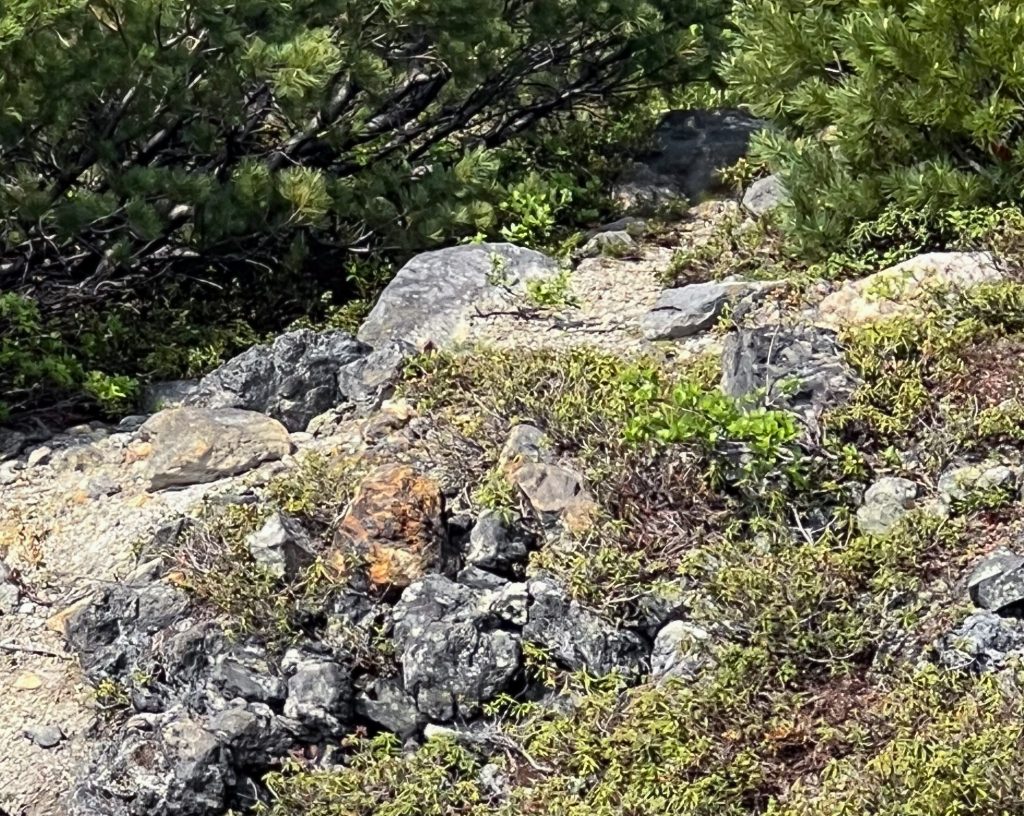
Pika Habitat
Happy with my lifer we walked back to the car and the five hour drive back to Abashiri. Todd remarked he had always wanted to take a “classic Jon trip”. By which he meant driving 10 hours for a one second glimpse of a small animal. I suspected he could point his family to the story as evidence of how well adjusted he was in comparison to me.
Five seconds later my daughter texted me after I told her about our trip: “classic dad”.
Perhaps they have a point.
We nearly hit two Sika Deer on the way home. They are abundant on the roads around Abashiri in particular.
Thanks
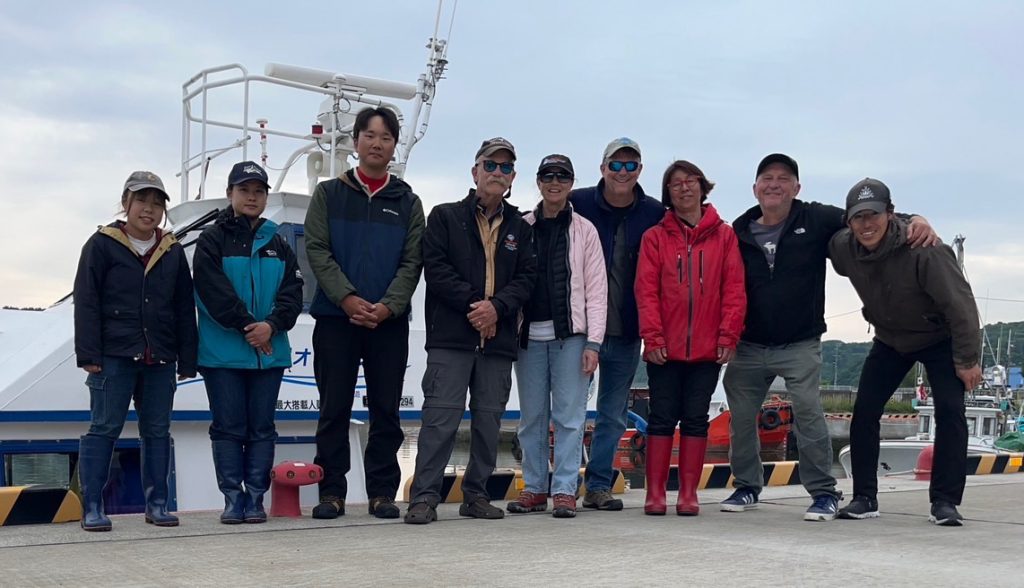
Team Sato’s
A big thanks to my companions for inviting me along, being such great company and helping to manage my anxiety levels. If they were not whale researchers they would make excellent mental health professionals. And a very very sincere thank you to Mari Kobayashi and her team for trying so hard to get us out on the water to see the whales and then, of course, for showing them to us during a fabulous day at sea.
Trip List
Northern Pika (Ochotona hyperborea) – lifer
Japanese Giant Flying Squirrel (Petaurista leucogenys) – endemic
Eurasian Red Squirrel (Sciurus vulgaris)
Siberian Chipmunk (Eutamias sibiricus) – Todd only
Japanese Badger (Meles anakuma) – endemic
Northern Fur Seal (Callorhinus ursinus)
Steller Sea Lion (Eumetopias jubatus) – Todd only
Japanese Raccoon Dog (Nyctereutes viverrinus) – endemic
Red Fox (Vulpes vulpes)
Sika Deer (Cervus nippon)
Minke Whale (Balaenoptera acutorostrata) -Todd only
Fin Whale (Balaenoptera physalus)
Humpback Whale (Megaptera novaeangliae) – probable
Dall’s Porpoise (Phocoenoides dalli)
Sato’s (Least) Beaked Whale (Berardius minimus) – lifer
15 species, 3 lifers
Post author
4 Comments
Leave a Reply
You must be logged in to post a comment.


Vladimir Dinets
I’ve been in Japan for two weeks and saw more badgers than in two years in 2018-19. Don’t know if it’s a particularly good year or a long-term trend.
You can improve your chances of seeing Sato’s beaked whales from shore by hiking north from Rausu. The closer you get to the tip of the peninsula, the closer deep water is to the shore.